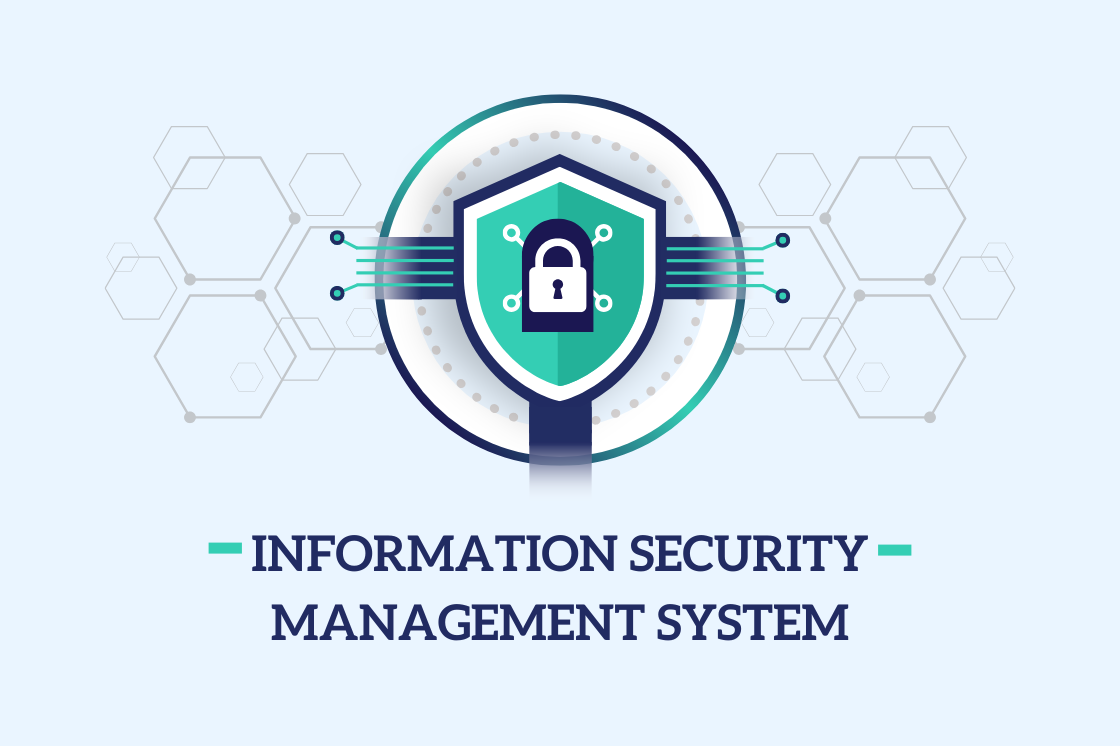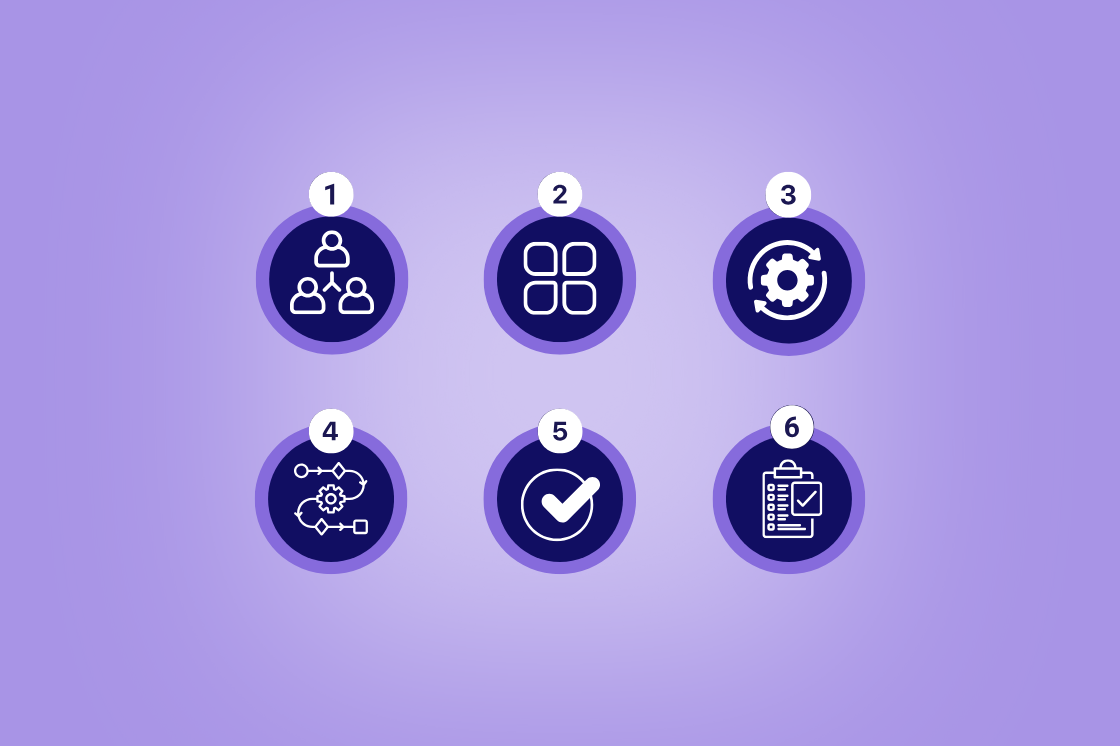The Fundamentals of NIST CSF 2.0: What it is and Why Its Important
Security risks are around every corner. Organizations now, more than ever, require a structured approach to identify, protect, detect, resolve, and recover from threats and vulnerabilities. The NIST Cybersecurity Framework offers this structure with flexibility and effectiveness!
We recently shared a post titled "What Is an Information Security Management System," offering a high-level overview of these essential cybersecurity frameworks.
Understanding these cybersecurity frameworks is crucial for CEOs, CIOs, CISOs, and anyone responsible for protecting their organization from cyber threats in today’s high-risk operating environment.
This post takes a deeper look at one of the most popular Information Security Management Systems, the National Institute of Standards and Technology Cybersecurity Framework (CSF) 2.0.
We will explore what the CSF 2.0 is, its key components, taxonomy, its benefits, and why it’s important for your organization.
What is the NIST Cybersecurity Framework (CSF) 2.0?
The NIST Cybersecurity Framework (CSF 2.0) is a collaboratively developed cybersecurity framework that provides a structured approach to managing cybersecurity risks. It is designed to be flexible, adaptable, and applicable to organizations of all sizes and sectors.
Cybersecurity and Risk Management
The goal of information security management is to protect an organization's IT assets, data, and critical infrastructure services from a wide range of risks.
Risk management is the proactive assessment of current and potential risks with the goal of identifying, prioritizing, and mitigating them.
The NIST CSF 2.0, emphasizes the importance of risk management as a critical and ongoing component of an organization's cybersecurity strategy, regardless of size or sector.
Not all risks are equal, and with finite resources, organizations must prioritize accordingly. Risk management allows an organization to assess risks for likelihood and impact, then develop and implement plans to either avoid, reduce, transfer, or accept the risks.
The NIST CSF 2.0 offers a balanced approach to managing cybersecurity risk in your organization.
Learn more about The Synergy Between Information Security and Risk Management.
NIST CSF 2.0 - Framework Overview
The NIST Cybersecurity Framework helps organizations reduce cybersecurity risk by providing them with a set of outcomes they should strive to meet.
What does NIST CSF 2.0 mean by outcomes?
An outcome is the desired result of a cybersecurity activity.
Each outcome in the CSF 2.0 is organized in a taxonomy by a function, category and subcategory (more on that later in this article).
For example, a desired outcome within the NIST CSF 2.0 is to 'limit access to physical and logical assets to authorized users, services, and hardware commensurate with the risk of unauthorized access.'
Activities to achieve these outcomes can include implementing a policy to regularly review access, and using tools such as key card readers, role-based access control (RBAC) systems, or multi-factor authentication (MFA) solutions to control access.
The beauty of an outcome-based approach is that the implementation activities can scale based on an organization's unique circumstances, such as resources, risk appetite, and complexity.
In short, the CSF 2.0 outlines the "what" (the outcomes) of cybersecurity rather than the "how," providing organizations with the flexibility to choose the most effective methods for their unique circumstances
NIST CSF 2.0 Development and Evolution
The NIST Cybersecurity Framework (CSF 2.0) was introduced by the National Institute of Standards and Technology (NIST) in response to a Presidential Executive Order on Improving Critical Infrastructure Cybersecurity in 2013. The goal was to protect the nation from growing cybersecurity threats while enhancing the nation’s ability to compete.
Initially titled the "Framework for Improving Critical Infrastructure Cybersecurity," the National Institute of Standards and Technology cybersecurity framework has evolved to address the increasing complexity of cybersecurity challenges.
The cybersecurity framework was a result of a multi-year collaborative effort led by the National Institute of Standards and Technology including contributions from industry, academia, and government agencies both in the USA and internationally.
On February 26, 2024, NIST released an updated version called the "NIST Cybersecurity Framework (CSF) 2.0". This updated cybersecurity framework is designed to help organizations of all sizes and sectors—such as industry, government, academia, and nonprofit—effectively manage and reduce cybersecurity risks.
NIST CSF 2.0 Flexibility and Application
The NIST CSF 2.0 is extremely flexible and can be applied to any organization regardless of size, sector and country, which is evidenced by its rapid adoption in both the US and abroad.
The flexibility and applicability of the CSF 2.0 is largely driven by its outcomes-based approach. This means an organization can tailor it to its own specific needs.
A small organization might take a straightforward approach by focusing on the most important security measures for specific systems or threats. In contrast, a larger organization may have a dedicated information security team using advanced technology to monitor and protect all of its systems.
The fact that NIST CSF 2.0 is outcomes based as opposed to a prescriptive cybersecurity framework has a number of benefits:
- Allows organizations to tailor their IT security practices to their specific needs by selecting actions and controls most suitable to them.
- Avoids the "one-size-fits-all" mentality by not imposing solutions inappropriate for the organization.
- Encourages innovation by freeing organizations to solve problems as they see fit (providing they meet the outcomes).
- Is technology, sector and country neutral, making the CSF applicable to a wide range of organizations regardless of their industry, location, or the specific technologies they use
To assist with implementation, the NIST CSF does link to a variety of implementation resources and guidance, such as the NIST 800 series of standards and guidelines related to information security and risk management.
Key Components of NIST CSF 2.0
The NIST Cybersecurity Framework (CSF) is built around a central structure called the CSF Core, which organizes cybersecurity goals into different levels: Functions, Categories, and Subcategories, also known as the taxonomy of outcomes.
Organizations can utilize the taxonomy of outcomes to articulate their current and desired levels of cybersecurity. They can also evaluate the rigor of their security practices by applying CSF Tiers, which provide a structured way to measure and enhance their cybersecurity maturity.
Additionally, there are online resources, such as guides, profiles, and examples, to help organizations understand and implement the framework.
The NIST CSF 2.0 Core
The CSF Core is designed to connect with individuals who are responsible for implementing security and risk management within an organization by aligning with existing security practices.
The CSFs hierarchy of functions, categories and categories makes it easy for everyone - from executives to management and individual contributors - to understand outcomes from their perspective.
By organizing content hierarchically, the CSF allows individuals at different organizational levels to approach the framework from their specific angle, making it easier for each to grasp how their actions and responsibilities align with overall outcomes.

CSF Core Functions (the taxonomy of outcomes)
The CSF is composed of six core functions—Govern, Identify, Protect, Detect, Respond, and Recover—enabling organizations to easily align with existing security and risk practices to the framework.
- Govern: This function is critical for organizations to establish a robust leadership and oversight framework for cybersecurity efforts. It involves defining roles and responsibilities, establishing policies and procedures, and ensuring compliance with applicable laws and regulations. Effective governance ensures that cybersecurity initiatives are aligned with the organization's objectives and risk tolerance, fostering accountability and continuous improvement in managing cybersecurity risks.
- Identify: This function is crucial for organizations to fully understand their cybersecurity risks. It involves identifying and managing organizational assets, understanding the cybersecurity risks to the organization, and recognizing opportunities for improvement. Effective identification lays the groundwork for subsequent security measures, enabling organizations to prioritize resources effectively.
- Protect: Once risks are identified, the Protect function focuses on implementing the necessary safeguards to minimize the potential impact of cyber events. This includes establishing access controls, conducting cybersecurity training for employees, ensuring data security practices are in place, and maintaining protective technologies. By taking proactive steps, organizations can better prepare for potential threats.
- Detect: The timely detection of cybersecurity incidents is essential for effective incident response. This function emphasizes the continuous monitoring of networks and systems to identify anomalies and vulnerabilities quickly. Organizations are encouraged to invest in advanced detection technologies and to establish processes for anomaly detection to maintain a vigilant stance against cyber threats.
- Respond: In the event of a cybersecurity incident, having a well-defined response process is crucial for containing and mitigating its impact. The Respond function includes planning for incident response, responding to incidents, conducting root cause analyses to understand the nature of the incident, stakeholder reporting and communication, preservation of evidence, and implementing improvements based on lessons learned. This proactive approach enables organizations to contain and mitigate incidents more effectively, minimizing disruption to operations.
- Recover: The final function centers on restoring capabilities and services impaired by a cybersecurity incident. This includes recovery planning, executing recovery activities, and recovery verification, along with communication with internal and external stakeholders. By focusing on recovery, organizations can enhance their overall resilience and prepare for future incidents.
CSF Categories and Sub-categories
The NIST Cybersecurity Framework (CSF) organizes its core functions into specific categories and subcategories, providing a structured way for organizations to implement cybersecurity measures.
A category is a group of related cybersecurity outcomes for the function. They tend to describe the management area that needs to be addressed.
Subcategories provide more specific outcomes of technical and management activities within each Category. While they can include specific technical controls, they also include management activities and can be about policy or process.
Together, there are six core functions, 22 categories across the six functions, and 106 subcategories across the 22 categories.
Here is a of the 22 CSF categories by function:
Govern (GV)
- Organizational Context (GV.OC)
- Risk Management Strategy (GV.RM)
- Roles, Responsibilities, and Authorities (GV.RR)
- Policy (GV.PO)
- Oversight (GV.OV)
- Cybersecurity Supply Chain Risk Management (GV.SC)
IDENTIFY (ID)
- Asset Management (ID.AM)
- Risk Assessment (ID.RA)
- Improvement (ID.IM)
PROTECT (PR)
- Identity Management, Authentication, and Access Control (PR.AA)
- Awareness and Training (PR.AT)
- Data Security (PR.DS)
- Platform Security (PR.PS)
- Technology Infrastructure Resilience (PR.IR)
DETECT (DE)
- Continuous Monitoring (DE.CM)
- Adverse Event Analysis (DE.AE)
RESPOND (RS)
- Incident Management (RS.MA)
- Incident Analysis (RS.AN)
- Incident Response Reporting and Communication (RS.CO)
- Incident Mitigation (RS.MI)
RECOVER (RC)
- Incident Recovery Plan Execution (RC.RP)
- Incident Recovery Communication (RC.CO)
CSF Sub-categories Example
We will not list all subcategories for the entire framework, but here is an example: this category (ID.AM) involves identifying and managing assets (e.g., data, hardware, software, systems, facilities, services, people) that enable the organization to fulfill its business objectives.
- ID.AM-01: Inventories of hardware managed by the organization are maintained
- ID.AM-02: Inventories of software, services, and systems managed by the organization are maintained
- ID.AM-03: Representations of the organization’s authorized network communication and internal and external network data flows are maintained
- ID.AM-04: Inventories of services provided by suppliers are maintained
- ID.AM-05: Assets are prioritized based on classification, criticality, resources, and impact on the mission
- D.AM-07: Inventories of data and corresponding metadata for designated data types are maintained
- ID.AM-08: Systems, hardware, software, services, and data are managed throughout their life cycles
NIST CSF Profiles
NIST Cybersecurity Framework (CSF) Profiles are customized plans that help organizations manage cybersecurity risks by aligning their security goals with business needs and acceptable levels of risk.
For example, a bank may prioritize data protection to meet regulatory requirements, while a small retail business focuses on securing customer information.
To create and utilize CSF Profiles, organizations assess their current cybersecurity capabilities and establish a desired future state, facilitating discussions on strategies and resource allocation. A healthcare organization, for instance, might develop a Profile centered on protecting patient information to comply with regulations.
CSF Community Profiles are a specific type of CSF Profile designed for groups of organizations facing similar cybersecurity challenges and goals.
These profiles enable organizations within the same industry or region, like a group of hospitals, to collaborate on common concerns, such as safeguarding patient health information and ensuring compliance with healthcare regulations.
By sharing best practices and resources, Community Profiles enhance collective security efforts, allowing organizations to learn from one another and respond to shared threats more effectively
NIST CSF Tiers
Tiers are a component of the NIST Cybersecurity Framework designed to help organizations assess their cybersecurity maturity and readiness. They provide a way to measure how well an organization is managing cybersecurity risks and to understand the increasing levels of sophistication in their cybersecurity practices. The purpose of the Tiers is to help organizations identify their current capabilities, set goals for improvement, and create a path toward a more resilient cybersecurity posture.
- Tier 1 - Partial: At this level, an organization has an informal approach to cybersecurity. They may recognize the importance of cybersecurity but lack a consistent and structured framework. There may be minimal coordination between departments, and their risk practices are not well defined.
- Tier 2 - Risk Informed: Organizations at this level start to develop a more structured approach. They are aware of their cybersecurity risks and have begun to implement processes to manage them, but these practices may be inconsistent across the organization. They might have some documented policies but lack comprehensive integration.
- Tier 3 - Repeatable: At this stage, organizations have established and documented cybersecurity processes that are consistently applied. They regularly review and update their practices based on lessons learned and have a better understanding of their cybersecurity risks. Coordination among departments is improving, leading to more effective risk management.
- Tier 4 - Adaptive: This is the highest level of maturity. Organizations in this tier continuously adapt and improve their cybersecurity practices based on changing threats and risks. They have a proactive approach, using advanced technologies and threat intelligence to inform their decisions. Collaboration and communication are strong across the organization and with external partners.
Why is the NIST CSF Important?
There are numerous benefits to adopting NIST CSF 2.0, including risk management, continuous improvement, flexibility, integration, and communication.
Risk Management
The CSF helps organizations understand and manage their cybersecurity risks more effectively by:
- Providing a common language for communicating cybersecurity risks both internally and externally
- Supporting risk prioritization by helping organizations identify, organize, and prioritize actions to manage cybersecurity risks
- Enabling better risk assessment by providing a structured way to describe an organization’s current and target cybersecurity posture
Continuous Improvement
The NIST Cybersecurity Framework (CSF) facilitates continuous improvement in an organization's cybersecurity posture through several key mechanisms. The top three ways the CSF improves continuous improvement are:
- Using Organizational Profiles to identify gaps and track progress
- Providing a structured framework for ongoing assessment and adaptation
- Integrating feedback from multiple sources, such as evaluations, security tests, exercises, and the execution of operational processes, allows for iterative improvements
Flexibility
The NIST Cybersecurity Framework (CSF) is designed to be flexible and adaptable to various organizational needs and contexts. Here are the top three ways the CSF enhances flexibility:
- The CSF is not prescriptive and does not mandate specific actions, allowing organizations to tailor its implementation to their unique needs
- The CSF is designed to be sector, country, and technology-neutral, allowing for broad applicability
- The CSF is intended to be used in conjunction with other resources, allowing organizations to integrate it into their existing risk management programs
Integration
The NIST Cybersecurity Framework (CSF) is designed to support integration with various risk management programs and organizational structures. Here are the top three ways the CSF supports integration:
- Integration with Enterprise Risk Management (ERM)
- Integration with other information and communications technology risk management programs
- CSF aligns with other frameworks you may already be using, such as COBIT, ISO 27001, HIPPA (Health Insurance Portability and Accountability Act), and PCI (Payment Card Industry)
Communication
The NIST Cybersecurity Framework (CSF) supports communication with internal and external stakeholders in several ways. Here are three key ways the CSF enhances communication:
- The CSF provides a common language for discussing cybersecurity risks, capabilities, needs, and expectations, which facilitates communication both inside and outside the organization
- The CSF promotes bidirectional information flow between executives, managers, and practitioners
- The CSF uses Organizational Profiles to describe an organization's current and target cybersecurity posture, facilitating communication about an organization's cybersecurity state
Supplementary Resources
Want to learn more? Check out these informative resources.
- The National Institute of Standards and Technology Cybersecurity Framework (CSF) 2.0
- CSF 2.0 Profiles
- CSF 2.0 Quick Start Guides
- CSF 2.0 Informative References
- How to Implement IT Security Management
- Building an IT Security Management Process
The NIST Cybersecurity Framework (CSF) is a crucial tool for organizations to safeguard against cybersecurity threats. Its flexible approach enables organizations to evaluate their capabilities, identify gaps, and prioritize actions based on specific needs. By adopting the CSF, organizations enhance their resilience and improve their ability to manage cybersecurity risks effectively.


